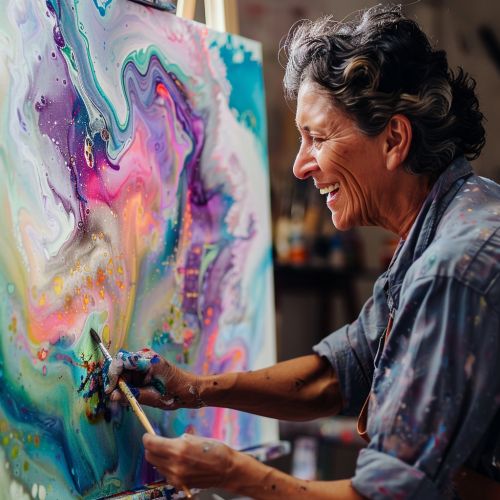Art and Emotion
Introduction
Art and emotion are intrinsically intertwined, with art often serving as a medium for expressing, evoking, and exploring emotions. The relationship between art and emotion has been a topic of interest in various disciplines, including philosophy, psychology, and aesthetics, among others. This article delves into the complex and multifaceted relationship between art and emotion, exploring the ways in which art can evoke emotion, the role of emotion in the creation of art, and the theoretical perspectives on the subject.


Art as a Medium for Expressing Emotion
Art has long been used as a medium for expressing emotion. Artists often imbue their works with their own feelings, experiences, and perceptions, using their chosen medium to communicate these emotions to the viewer. This can be seen in various forms of art, including visual arts, literature, music, dance, and theatre.
Art as a Medium for Evoking Emotion
Beyond expressing the artist's own emotions, art also has the power to evoke emotions in the viewer or audience. This is often a key goal in the creation of art, with artists using various techniques and elements to elicit specific emotional responses. The emotions evoked by a piece of art can vary widely depending on a variety of factors, including the viewer's personal experiences, cultural background, and individual interpretation.
The Role of Emotion in the Creation of Art
Emotion plays a crucial role in the creation of art. It can serve as a source of inspiration, driving the artist to create and shaping the content and form of their work. Emotion can also influence the creative process itself, affecting the artist's decision-making, problem-solving, and overall approach to their work.
Theoretical Perspectives on Art and Emotion
Various theoretical perspectives have been proposed to explain the relationship between art and emotion. These include cognitive theories, which suggest that the emotional response to art is a result of cognitive processes such as interpretation and evaluation, and psychoanalytic theories, which propose that art serves as a means of expressing unconscious emotions and desires.
Conclusion
The relationship between art and emotion is complex and multifaceted, encompassing the ways in which art expresses and evokes emotion, the role of emotion in the creation of art, and the theoretical perspectives on the subject. Understanding this relationship can provide valuable insights into both the nature of art and the nature of emotion.
